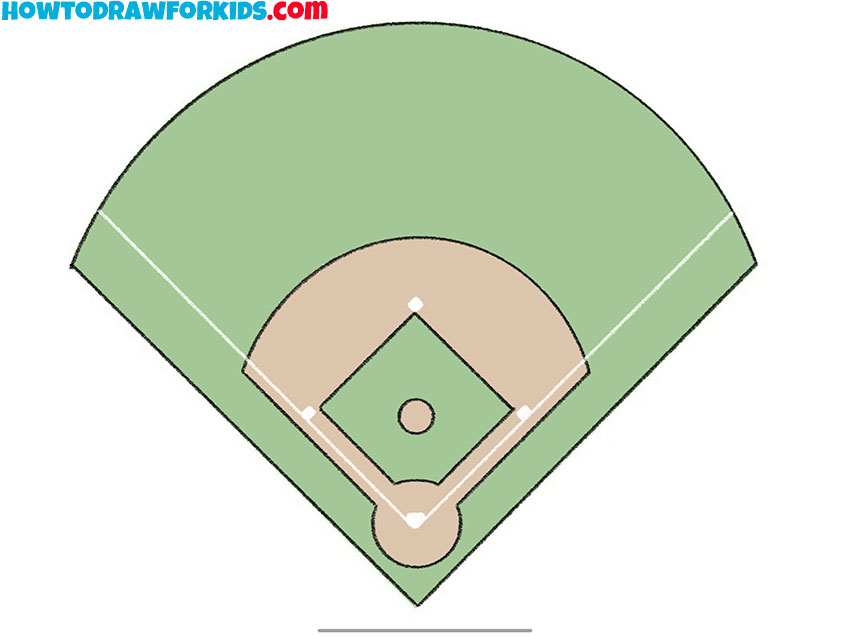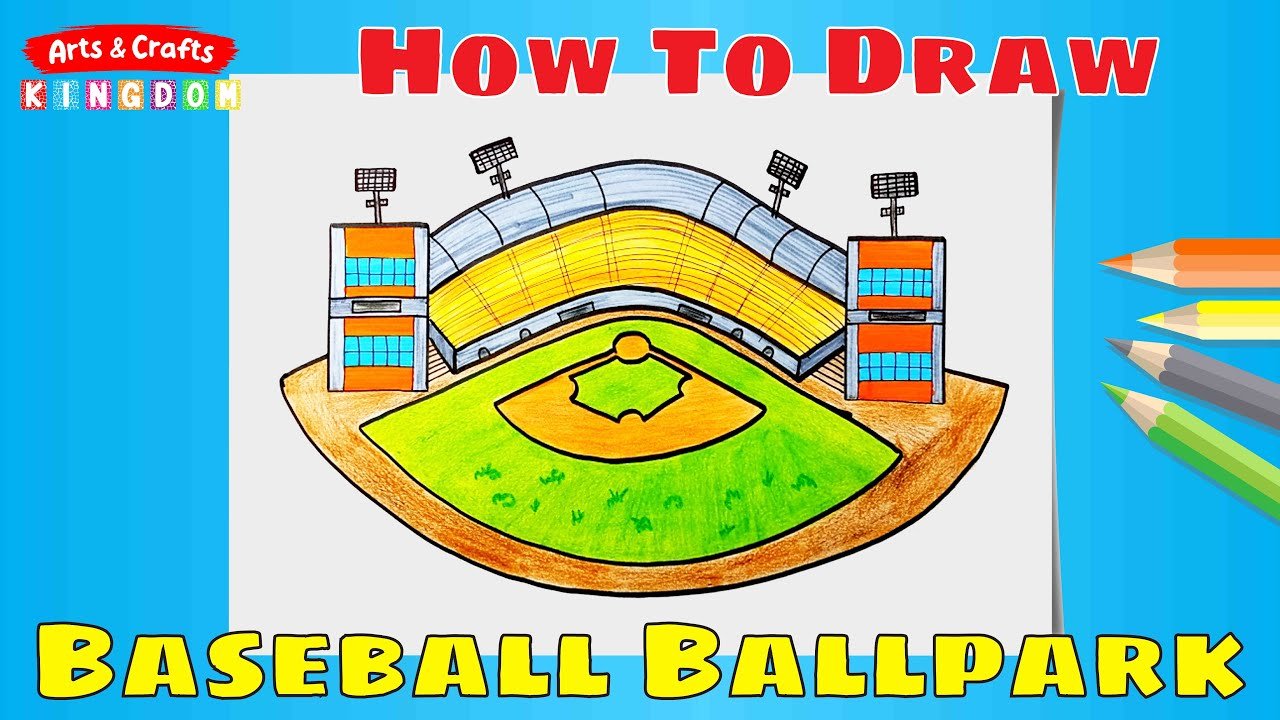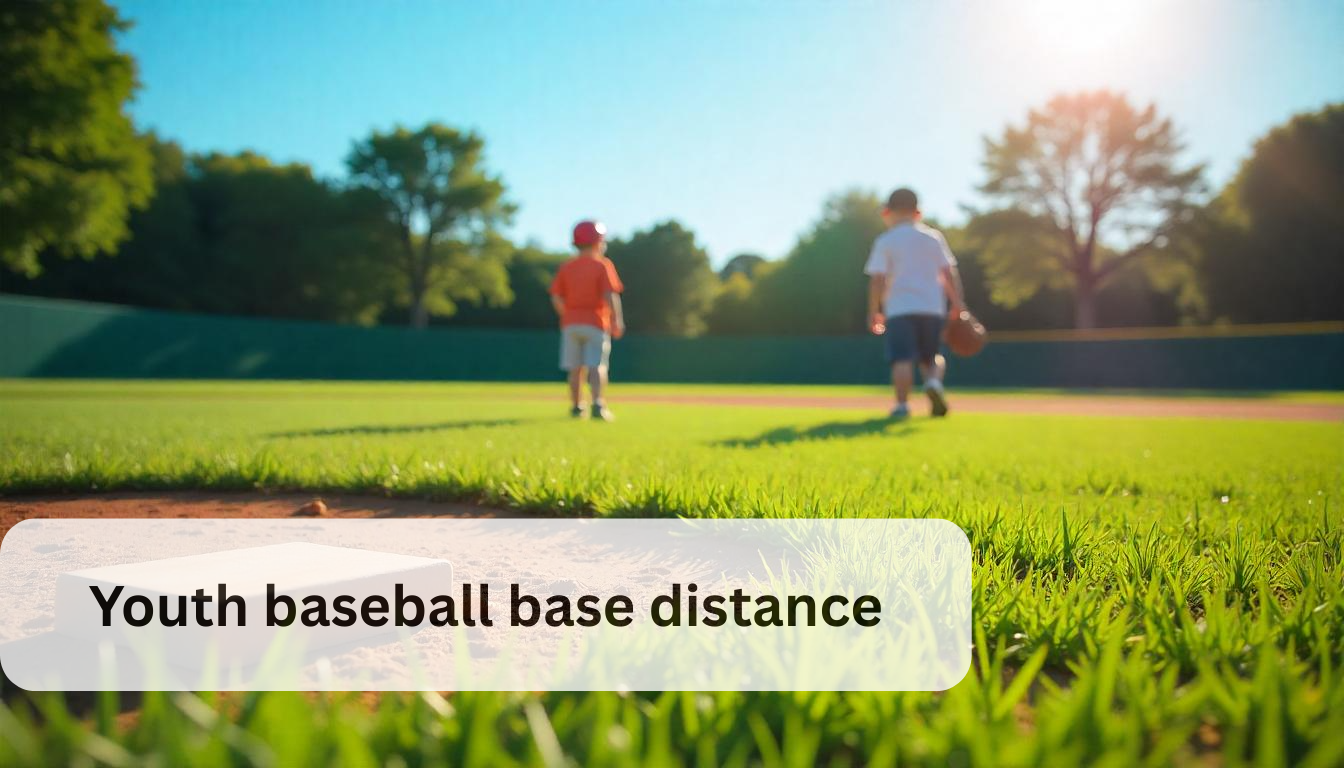Drawing a baseball field might seem tough, but it’s quite simple. You just need the right steps and tools.
Creating a baseball field on paper can be a fun and rewarding activity. Whether you’re a sports fan, a coach, or a student, understanding the layout of a baseball field is useful. This guide will walk you through each step, ensuring you capture the correct dimensions and markings.
By the end, you’ll have a clear and accurate drawing of a baseball field. So, grab your paper, pencil, and ruler, and let’s get started on this creative journey. Get ready to bring a baseball field to life with just a few simple lines and shapes.
Materials Needed
Creating a perfect baseball field drawing requires some basic materials. Having the right tools ensures your drawing is accurate and detailed. Below, we’ll outline the essential materials you need.
Drawing Tools
To start your baseball field drawing, you need some essential drawing tools. Here are the basics:
- Pencils: Use a set of pencils with varying hardness.
- Erasers: A good eraser to correct mistakes.
- Ruler: For drawing straight lines and measuring distances.
- Drawing Paper: Choose a quality drawing paper for best results.
- Compass: Helpful for drawing circles and arcs.
Reference Images
Having reference images is crucial for accuracy. Here are some tips:
- Photographs: Use clear photos of baseball fields.
- Diagrams: Find detailed diagrams with measurements.
- Online Resources: Websites and online tools can provide useful images.
Having these reference images will guide your drawing process and ensure you capture the right details.

Credit: www.youtube.com
Choosing The Layout
Choosing the layout for a baseball field is an important step. It ensures the field meets standard dimensions and provides a fair playing area. This section will guide you through selecting the best layout for your baseball field.
Field Dimensions
First, understand the standard dimensions of a baseball field. The distance between bases is 90 feet for a professional field. The pitcher’s mound is 60 feet 6 inches from home plate. The outfield fence can vary, but for a major league field, it’s about 400 feet to center field.
Measure these distances carefully. Use a measuring tape or a long piece of string. Mark each spot clearly. These measurements ensure the field is accurate and playable.
Positioning The Bases
Next, position the bases correctly. Start with home plate. Place it at one corner of a square. Use the 90-foot measurement from home plate to first base.
Then, measure 90 feet from first base to second base. Continue by measuring 90 feet from second base to third base. Finally, measure 90 feet from third base back to home plate. This forms a perfect diamond shape.
Ensure each base is securely anchored. Bases should not move during play. This helps prevent injuries and keeps the game fair.
Sketching The Field Outline
Sketching the outline of a baseball field is the first step in drawing a complete field. It might seem tricky, but with a few simple steps, anyone can do it. Start by gathering your materials. You will need a pencil, eraser, ruler, and paper. Begin by drawing the basic shape of the field, which includes the diamond and the outfield. Let’s break down these steps to make it easier.
Drawing The Diamond
The diamond is the heart of the baseball field. Start by drawing a square in the center of your paper. Each side of the square should be equal. Rotate the square so that it looks like a diamond. This is where the bases will go. Draw a small circle at each corner of the diamond. These represent the bases: first base, second base, third base, and home plate.
Next, draw the pitcher’s mound. Place it in the center of the diamond. The pitcher’s mound is slightly raised and round. Draw a small circle to represent it. Make sure it is equidistant from home plate and second base. This will help keep your drawing accurate.
Adding The Outfield
Now, add the outfield to your baseball field sketch. Start by drawing two lines from home plate. These lines should extend outward, creating a large V shape. These lines mark the foul lines. The area between these lines is the fair territory.
Next, draw an arc connecting the ends of the foul lines. This arc represents the outfield fence. The outfield is the area beyond the diamond and within the arc. Be sure to make the outfield large enough to fit the scale of the diamond. This will give your drawing a balanced look.
Finally, add details like the bases’ paths and the pitcher’s mound’s height. Draw lines connecting the bases. These lines form a diamond shape within the larger diamond. Add a small circle around the pitcher’s mound to show its elevation. Your baseball field sketch is now complete.
Drawing The Bases
Drawing the bases is a crucial part of creating a baseball field. Each base forms a corner of the infield diamond. Proper placement ensures the field looks authentic and accurate. Let’s break down each base step by step.
First Base
First base is located on the right side of the field when facing home plate. Measure 90 feet from home plate along the right foul line. Mark this spot clearly. This is the position for first base. Draw a square measuring 15 inches on each side. This is the standard size of a base.
Second Base
Second base is at the center of the infield. Measure 90 feet from first base towards the center of the field. Mark this spot. Also, measure 90 feet from home plate straight ahead to double-check the location. Draw a 15-inch square here as well. This forms the second base.
Third Base
Third base is placed on the left side of the field when facing home plate. Measure 90 feet from second base towards the left foul line. Mark this spot. Ensure it is 90 feet from home plate to confirm the position. Draw another 15-inch square here. This is third base.
Home Plate
Home plate is a unique shape, unlike the other bases. It is a five-sided slab, 17 inches wide. Position it so the pointed end faces the pitcher’s mound. Draw a rectangle 17 inches wide and 8.5 inches deep, then add two 12-inch sides angling to the point. Ensure it sits snugly at the apex of the diamond.
| Base | Distance from Home Plate | Shape | Dimensions |
|---|---|---|---|
| First Base | 90 feet | Square | 15 inches |
| Second Base | 90 feet | Square | 15 inches |
| Third Base | 90 feet | Square | 15 inches |
| Home Plate | N/A | Pentagon | 17 inches wide |
Ensure each base is correctly positioned. This creates a professional-looking baseball field.
Creating The Pitcher’s Mound
Creating the pitcher’s mound involves placing a small, raised circle in the middle of the baseball field. This is the spot where the pitcher stands to throw the ball to the batter.
Creating the pitcher’s mound is a crucial step in drawing a baseball field. The mound is the heart of the field, where the pitcher stands to throw the ball. It needs to be placed correctly and have the right dimensions for a proper baseball game.
Mound Location
The pitcher’s mound is located in the center of the infield. Measure 60 feet and 6 inches from home plate. This distance marks the exact position of the pitcher’s mound. The mound should be in line with the bases. Check the measurements to ensure accuracy.
Mound Details
The pitcher’s mound has a circular shape. It has a diameter of 18 feet. The height should be 10 inches above the level of home plate. Draw a small rectangle on top of the mound. This is the pitcher’s rubber. It measures 24 inches by 6 inches. Ensure the rubber faces home plate directly. This helps the pitcher aim their throws accurately. The mound should slope downwards starting from the pitcher’s rubber. The slope should extend 6 feet from the rubber. This ensures the pitcher’s safety and the ball’s proper trajectory. Make sure the surface is smooth and even. This prevents any tripping or falling. By following these steps, you create a well-positioned and detailed pitcher’s mound. This makes your baseball field accurate and ready for play. “`

Credit: helloartsy.com
Adding The Infield
Drawing a baseball field is an enjoyable task. It’s important to get the infield right. This section will guide you through adding the infield. We’ll discuss the infield grass and the infield dirt. These elements are key to a realistic baseball field.
Infield Grass
The infield grass is the area within the diamond. It surrounds the bases but leaves space for the dirt paths. Start by sketching a diamond shape. This should be inside the main field outline. The grass should look well-kept and even. Use light green to represent the grass. It helps if the grass lines are parallel to the field edges. This gives a neat and professional look.
Remember, the infield grass stretches to the outfield. It covers about a third of the field. Keep the lines smooth and consistent. This makes the field look more realistic. Take your time to get the grass right. It’s a crucial part of the field’s appearance.
Infield Dirt
The infield dirt is a key part of the baseball field. It includes the areas around the bases and the pitcher’s mound. Start by marking the base paths. These are the lines connecting first, second, and third base. The dirt should be a light brown color. This contrasts with the green grass.
Next, draw the pitcher’s mound. It’s a circle in the middle of the diamond. The pitcher’s mound is slightly raised. Make sure to include the rubber, where the pitcher stands. The dirt area should look smooth and level. Avoid making it too dark.
Finally, add the home plate area. It’s a five-sided shape at the bottom of the diamond. The dirt here should be even and flat. It should match the rest of the infield dirt. The transition between grass and dirt should be smooth. This adds to the field’s realism.
Detailing The Outfield
Creating a detailed and accurate baseball field requires attention to the outfield. The outfield is the large grass area beyond the infield. This section includes specific elements like the outfield grass and the warning track. Let’s break down each part.
Outfield Grass
The outfield grass is a crucial part of any baseball field. It needs to be well-maintained and evenly cut. The grass should be trimmed to a uniform height, usually around 1.5 to 2 inches. This ensures a smooth playing surface.
Use a lawnmower with a sharp blade for the best results. Regular mowing helps keep the grass healthy and looking good. Watering the grass is also important. The outfield grass needs about 1 to 1.5 inches of water per week.
Fertilize the grass to promote growth and color. Use a balanced fertilizer with equal parts nitrogen, phosphorus, and potassium. Apply fertilizer every 6 to 8 weeks during the growing season.
Warning Track
The warning track is a strip of material that runs along the edge of the outfield. Its main purpose is to alert fielders that they are nearing the fence. The warning track is usually made of dirt, crushed gravel, or another type of loose material.
The width of the warning track is typically 10 to 15 feet. This gives players enough space to react. The material used should be different from the grass to provide a distinct texture.
Maintaining the warning track involves regular raking and leveling. This keeps the surface even and safe for players. Watering the track can help keep dust down and the material compacted.
Here is a simple table summarizing the key points:
| Element | Maintenance Tips |
|---|---|
| Outfield Grass |
|
| Warning Track |
|
Final Touches
You’re almost done with your baseball field drawing. Now, it’s time to add the final touches. These details will make your field look complete and professional. Let’s dive into the last steps to perfect your drawing.
Foul Lines
First, draw the foul lines. These lines extend from home plate to the outfield fence. They mark the boundary between fair and foul territory. Use a ruler to make sure they are straight. The lines should be evenly spaced and reach both the left and right edges of the field.
Next, add the foul poles. These are placed where the foul lines meet the outfield fence. They help determine if a ball is fair or foul. Draw a straight vertical line at each end of the foul lines. Make sure they are tall enough to be easily seen.
Additional Features
Now, add the bases. You need to draw three bases and home plate. Place them in a diamond shape. Each base should be an equal distance from the others. Home plate is at the bottom of the diamond.
Draw the pitcher’s mound next. It is a small circle in the center of the diamond. Make sure it is evenly spaced from the bases. The mound should be slightly raised.
Include the dugouts. These are the benches where players sit during the game. Place one on each side of the field, near the foul lines. Draw small rectangles to represent them.
Finally, add the outfield fence. This marks the outer boundary of the field. Draw a curved line connecting the foul poles. Make sure it is evenly spaced from the bases and home plate.
With these final touches, your baseball field drawing is complete. Enjoy the result of your hard work and attention to detail.

Credit: howtodrawforkids.com
Frequently Asked Questions
What Tools Do I Need To Draw A Baseball Field?
To draw a baseball field, you’ll need measuring tape, chalk or paint, string, stakes, and a field layout diagram.
How Do I Measure The Baseball Field Dimensions?
Measure distances carefully: 90 feet between bases, 60. 5 feet from the pitcher’s mound to home plate, and appropriate outfield distances.
How Do I Mark The Bases On A Baseball Field?
Use stakes and string to outline base paths, then mark bases with chalk or paint for accurate placement.
What Is The Correct Layout For A Baseball Field?
A baseball field has a diamond shape with four bases, a pitcher’s mound, and specific outfield dimensions.
Conclusion
Creating a baseball field drawing is simpler than you think. Start with the basic shapes. Add details gradually. Use a ruler for straight lines. Measure distances accurately. Practice makes perfect. Keep refining your skills. Soon, you’ll draw fields with ease.
Share your work with friends. Enjoy the process of learning. Happy drawing!





